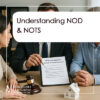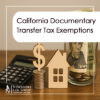
Property liens are an essential aspect of real estate that can significantly impact the ability to sell or refinance a property. A lien is a legal claim or encumbrance placed on a property, typically as a result of a debt owed by the property owner. Understanding the different types of liens and their implications is crucial for property owners, buyers, and real estate professionals. This article provides an overview of the most common property liens and judgments, explaining their nature, how they arise, and the potential consequences for the property owner.
What is a Property Lien?
A property lien is a legal claim against a piece of real estate, also known as real property, due to an unpaid debt. When a lien is placed on a property, it creates a legal barrier that can prevent the owner from selling or refinancing the property until the debt is satisfied, and the lien is removed. In some cases, a lien can even lead to foreclosure if the debt remains unpaid.
Liens can be categorized based on their scope, how they are applied, and whether they are imposed with or without the property owner’s consent. Understanding these distinctions is key to navigating real estate transactions.
Types of Property Liens
-
General vs. Specific Liens
- General Liens: These liens apply to all of the debtor’s property, not just a specific asset. For example, if a person fails to pay federal income taxes, the government can place a general lien on all of their property, including real estate, vehicles, and other assets.
- Specific Liens: These liens apply only to a particular asset. For instance, a mortgage lien is specific to the property that was mortgaged. If the homeowner defaults on the mortgage, the lender can foreclose on that specific property, but other assets are not affected.
-
Voluntary vs. Involuntary Liens
- Voluntary Liens: These are liens that the property owner willingly accepts, typically as part of a financial agreement. A common example is a mortgage lien, where the property owner agrees to use the property as collateral for a loan.
- Involuntary Liens: These liens are imposed without the property owner’s consent, usually as a result of unpaid debts or legal judgments. Examples include tax liens, mechanic’s liens, and judgment liens.
Common Types of Property Liens
-
Mortgage Lien
- Type: Specific, Voluntary
- Description: A mortgage lien is placed on a property when the homeowner takes out a mortgage to purchase it. This lien is specific to the mortgaged property and remains in place until the mortgage is paid off.
-
Judgment Lien
- Type: General or Specific, Voluntary or Involuntary
- Description: A judgment lien is issued by a court when someone fails to repay a debt. This lien can be general (affecting all property owned by the debtor) or specific (affecting only particular property). It can also be voluntary if the debtor uses their property as collateral, or involuntary if the court imposes the lien without the debtor’s consent.
-
Attachment Lien
- Type: General or Specific, Involuntary
- Description: An attachment lien is placed on a property to prevent the owner from selling it during an ongoing legal dispute, such as a divorce or bankruptcy proceeding. This lien can be general or specific depending on the case.
-
Estate Tax Lien
- Type: General, Involuntary
- Description: This lien is imposed when estate taxes are not paid on property inherited after someone’s death. The government can place a general lien on the inherited property to secure payment of the owed taxes.
-
Corporate Franchise Tax Lien
- Type: General, Involuntary
- Description: Some states impose a corporate franchise tax on businesses operating within the state. Failure to pay this tax can result in a general lien against the business’s property.
-
Federal Tax Lien
- Type: General, Involuntary
- Description: The federal government can place a general lien against all property owned by a citizen who fails to pay their federal income taxes.
-
Mechanic’s Lien
- Type: Specific, Involuntary
- Description: A mechanic’s lien can be placed on a property by contractors or suppliers who have not been paid for work or materials provided. This lien is specific to the property where the work was performed.
-
Vendor’s Lien
- Type: Specific, Involuntary
- Description: A vendor’s lien allows a seller to repossess a property if the buyer fails to make all agreed-upon payments. This typically occurs in situations where the seller financed the purchase because the buyer couldn’t secure a traditional mortgage.
-
Vendee’s Lien
- Type: Specific, Involuntary
- Description: A vendee’s lien protects buyers who have purchased property in a development that the developer fails to complete. The lien is placed against the development to ensure that the buyers’ investments are protected.
-
Bail Bond Lien
- Type: Specific, Involuntary
- Description: When a homeowner uses their property as collateral to post bail, a bail bond lien is placed on the property. If the homeowner fails to appear in court, the bail bondsman can foreclose on the property.
-
Municipal Utility Lien
- Type: Specific, Involuntary
- Description: Failure to pay municipal utility bills, such as for water or electricity, can result in a specific lien being placed on the property. This lien must be satisfied before the property can be sold or transferred.
Consequences of Property Liens
When a property has a lien, it creates significant challenges for the property owner. The most immediate consequence is that the owner cannot sell or refinance the property until the lien is satisfied and removed. Additionally, some liens, particularly those related to taxes or mortgages, can lead to foreclosure if the underlying debt is not paid. In such cases, the property may be sold at auction to satisfy the debt, potentially resulting in the loss of the property for the owner.
How to Remove a Lien
To remove a lien from a property, the debt must be paid in full, or an agreement must be reached with the lienholder. Once the debt is satisfied, the lienholder will typically provide a release of lien document, which must be filed with the county recorder’s office to officially remove the lien from the property’s title.
In some cases, it may be possible to challenge the validity of a lien in court, particularly if the lien was improperly placed or if the debt is disputed. If successful, the court may order the lien to be removed.
Conclusion
Property liens are an important consideration in real estate transactions, as they can significantly impact a property’s marketability and the owner’s ability to sell or refinance. Understanding the different types of liens, how they arise, and how they can be resolved is crucial for property owners, buyers, and real estate professionals. If you are dealing with a property lien, consulting with a real estate attorney can provide valuable guidance and help protect your interests.






